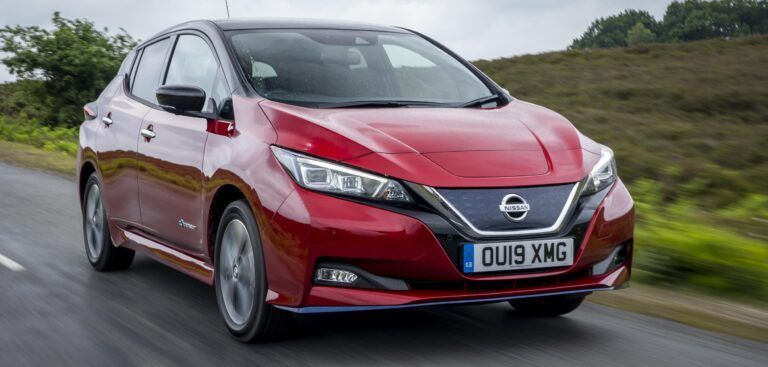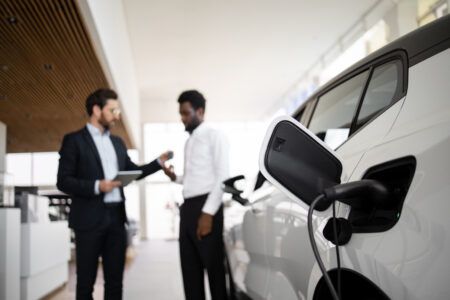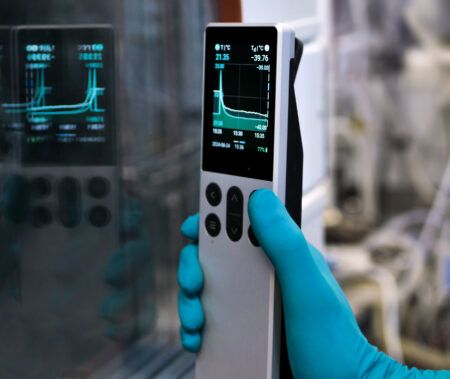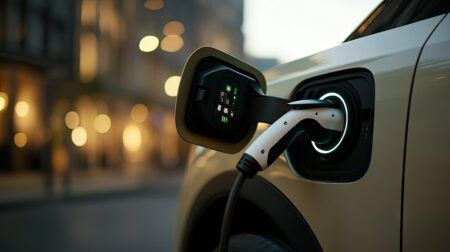According to recent data from the Society of Manufacturers and Traders (SMMT), more than 12,000 battery electric vehicles (BEVs) were registered in the UK in July. To date this year, 127,492 UK drivers have embraced electrification – an increase of 49.9% compared to the same period in 2021.
But while data points to continued sector growth, wider market pressures are seemingly slowing the transition. Indeed, a worldwide deficit of lithium, a global shortage of semiconductors and the ongoing conflict in Ukraine are all heavily impacting production efficiencies, with some OEM lead times reportedly reaching upwards of twelve months.
And that’s not all. While the purchase price of EVs has continued to tumble, comparable finance rates are still far higher than their internal combustion engine (ICE) counterparts. With government incentives also beginning to wane, affordability remains a major concern for many motorists.
So, with supply slim and prices high, is going electric necessarily the right choice for every motorist? Tom Callow, head of external affairs at myenergi, explains why second-hand EVs are a great option for savvy motorists. Alongside busting myths surrounding battery degradation and range, he selects five reliable models that consumers can purchase today for less than the average national used car price.
The used EV market
A quick search on Auto Trader brings up more than 8,500 results for used BEVs and nearly 7,000 results for used plug-in hybrids, spanning 33 manufacturers and hundreds of models – from hatchbacks and hybrids to coupes and convertibles. The choice is truly vast, and availability is immediate.
While you can’t miss the mix of top-end nearly new models pushing upwards of £100k, there’s also a huge choice of cars for far less than £17,173 – the average UK spend on a second-hand vehicle. You might have to compromise a little when it comes to color, features or mileage, but the listings are packed with brilliant buys!
But with such an expansive selection of listings, from both approved dealers and private sellers, what’s the best buy for the average UK motorist? What’s more, what do you get for your money and what sort of real-world range should you expect?
To give you a helping hand, I’ve put together my top five choices of used models for sub £17k. Reliable, reputable and – most importantly – environmentally friendly:
- BMW i3 (33 kWh) – One of the first and one of the best, the BMW i3 has a real-world range of around 125 miles. Its compact size makes it perfect for city driving, while its futuristic styling help you stand out from the crowd.
- Nissan LEAF (40 kWh) – For a bargain price, you can pick up one of the most iconic EVs. With a real-world range of 140 miles, it’ll eat up the daily commute.
- Renault ZOE Z.E.40 i (40 kWh) – Cheap to run, cheap to buy, the Renault Zoe is the perfect all-rounder. You can easily grab a battery-owned model with a real-world range of around 155 miles for a bargain price.
- smart EQ fortwo (17 kWh) – Iconic styling and 60 miles electric range can be yours for as little as £13,500. What’s more, no parking space will ever be too small.
- Volkswagen e-Golf (24kWh) – Impressive build quality and a real-world range of over 80 miles is more than enough for the average UK motorist’s daily needs.
Pushing your budget a little further, you can easily stray into the realms of a Kia Niro, Mazda MX-30, MG ZS, Hyundai Kona or DS 3 Crossback. All in all, a great selection of low mileage used models for a fraction of the price.
But even though the choice is there, many motorists are still put off the used market by misinformation. From battery systems failing and range figures plummeting, to planned obsolescence after your three-year finance deal is up, we’ve all heard the rumors.
But what’s the truth? How long can you keep an EV? When will you need a new battery? Does the range start to drop quickly after purchase, making the used market a minefield? What’s more, with the energy crisis seeing electricity prices rocket, do the risks really outweigh the benefits?
Biggest EV myths
Experts suggest that the average EV battery pack can last almost 20 years, or 200,000 miles – a significantly longer lifespan than the typical internal combustion engine and far longer than today’s average length of vehicle ownership. What’s more, while battery efficiency will eventually start to drop, the average EV will lose just 2% of accessible range per year – an arguably minor decline.
It might sound obvious, but the latest models have been designed to far outperform their petrol and diesel predecessors. Significant investment has been made by manufacturers into designing ever-more capable vehicles to suit the needs of tomorrow’s drivers and it really shows. The EVs of today, which include those on our list, have excellent ranges, impressive durability and are cheap to maintain thanks to fewer moving parts.
So, while scaremongering about EVs is commonplace, switching to electric really is the sensible option for motorists – regardless of budget. Need a nippy run-around for your trips into town? There’s countless hatchbacks that’ll suit you down to the ground. Need something a little bigger for motorway journeys? You can pick up an SUV, saloon or estate that’ll keep on going for another decade.
But what about the elephant in the room? Rising electricity bills. Will your used EV quickly become a drain on your finances? Will the price cap rise far above petrol prices and massively impact my finances? All important questions but, again, motorists shouldn’t be concerned.
EV charging costs
While the environmental benefits of EVs are widely publicized, the financial benefits are equally as impressive. At current prices, a small hatchback like the Renault Zoe would cost less than £650 per annum for the average driver to run if they charge at home. Even though these prices will increase in October when the energy price cap jumps, EVs are still the most cost-efficient option – especially with fuel prices now pushing £1.90 per liter (for diesel) and an average tank (55 liters) costing upwards of £100.
The real cheat is if you have a solar array and an eco-smart EV charger, like the myenergi zappi. In this instance, you can effectively charge at home for free by self-consuming your self-generated renewable energy – zero fossil fuels, zero reliance on the grid, zero emissions travel. Of course, it requires an up-front investment, but the ability to take total control of your home energy use is an attractive one.






